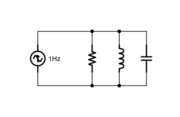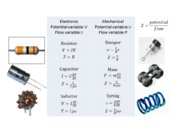Lab Manual: Limits of Detection
Overview
Atomic force microscopy and optical trapping are key techniques for investigating forces in biological systems at cellular and molecular levels. Both instruments can exert and measure forces on submicron-scale particles. This capability offers a unique and valuable tool for manipulating and measuring cell components at the single molecule level. For example, optical traps have been used extensively to investigate the mechanical properties of biological polymers and the force generation mechanisms of molecular motors. In many studies, optical tweezers apply force to functionalized microspheres, which act as convenient handles attached to molecules of interest.
To make quantitative force measurements, AFMs and optical traps records the displacement of a trapped object over time. For small displacements, the exerted force is very nearly proportional to displacement, so they can be modeled as linear springs. Accurate force and position measurements depend on careful calibration of the position detector responsivity, R, and the stiffness α. On the AFM, the stiffness is a function of the cantilever geometry. The optical trap's stiffness is a function of trapping laser power, bead size, bead composition, and optical properties of the sample.
In this lab, you will investigate the limits of force detection using AFM and optical traps. The lab will involve a one hour lab session in which you will take data on the teaching AFM and optical trap. You will analyze the data to determine α and R, and you will calculate the minimum detectable force, δ, for both instruments.
Background reading
- Neuman & Nagy. Single-molecule force spectroscopy: optical tweezers, magnetic tweezers and atomic force microscopy. Nature Methods - 5, 491 - 505 (2008).
Resolution limit
Second order system
- $ \dfrac{1}{Z_{eq}}=\dfrac{1}{Z_R}+\dfrac{1}{Z_L}+\dfrac{1}{Z_C} $
- $ Z_{eq}=\frac{Z_R Z_L Z_C}{Z_R Z_L + Z_R Z_C + Z_L Z_C} $
- $ Z_{eq}=\frac{\hat{V}_o(s)}{\hat{I}_{in}(s)}=\frac{RL/C}{RLs+\dfrac{R}{Cs}+\dfrac{L}{C}}=\frac{Ls}{LCs^2+\dfrac{L}{R}s+1} $
Mechanical circuit analogy
$ \frac{\hat{V}_o(s)}{\hat{F}_{in}(s)}=\frac{\dfrac{1}{m}s}{s^2+ \dfrac{b}{m} s+\dfrac{k}{m} } $




